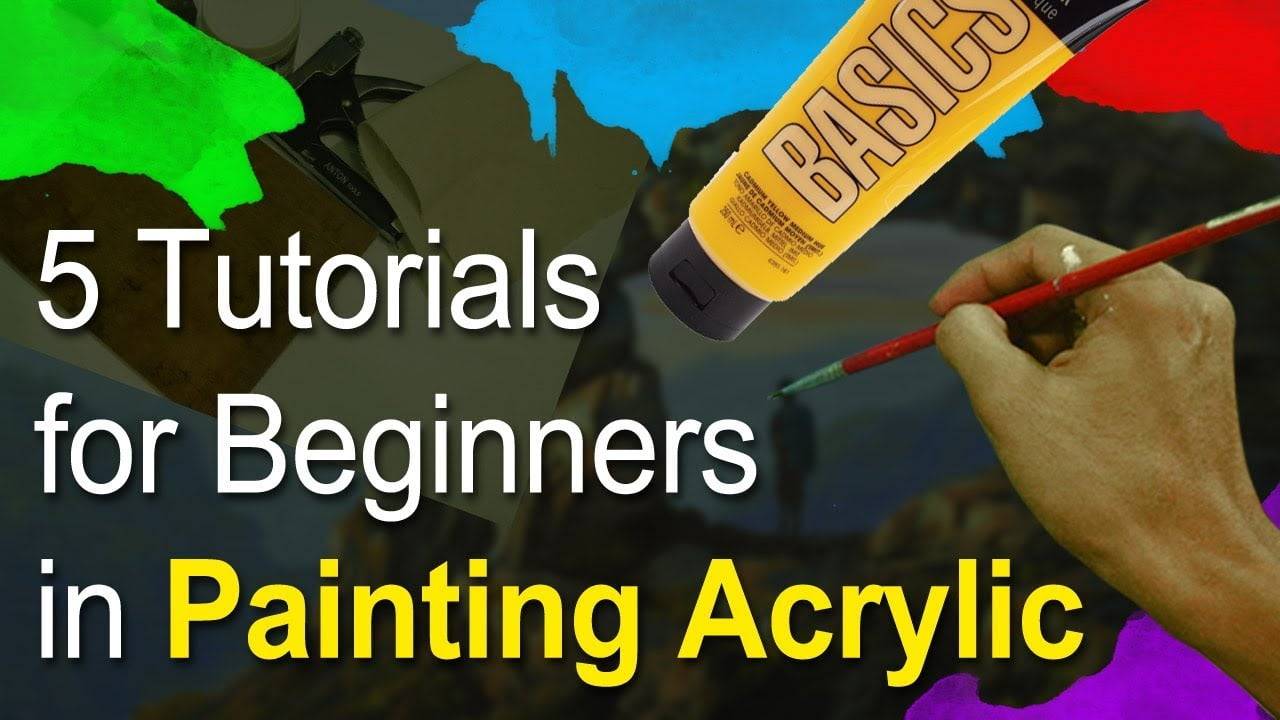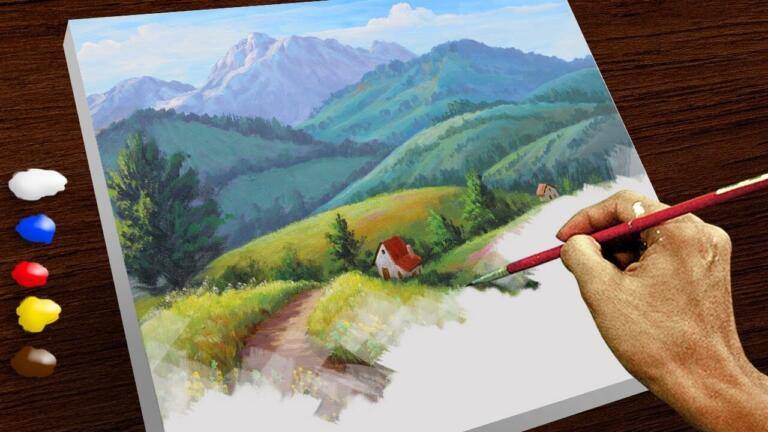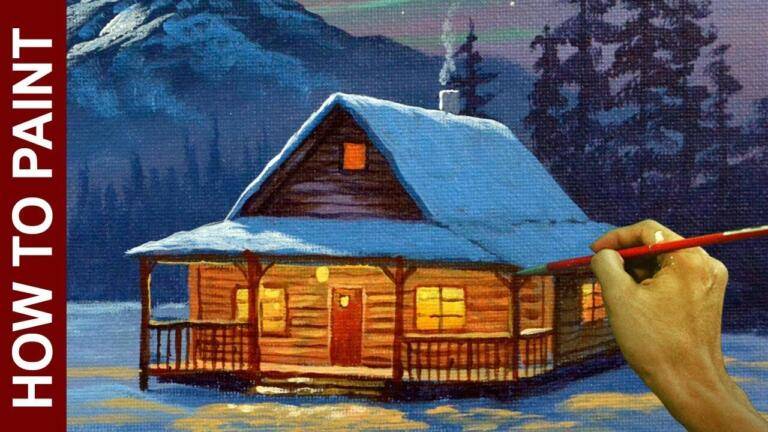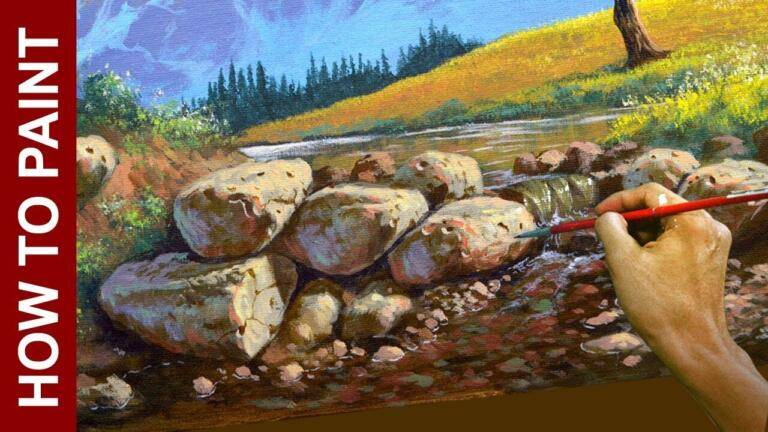
5 Tutorials for Beginners on How to Start Acrylic Painting
How to Start Acrylic Painting: 5 Essential Tutorials for Beginners
Are you new to the vibrant world of acrylic painting but feeling a little unsure where to start acrylic painting? Fear not! John Magne Lisondra (JMLisondra), an accomplished artist renowned for his clear and practical teaching style, offers five fundamental tutorials specifically tailored to empower aspiring painters. His expert advice focuses not only on essential artistic skills but also on cost-saving strategies, which are incredibly valuable when you’re just beginning your creative journey. These tutorials emphasize using affordable materials, including cheap brushes and paints, to maximize your learning without breaking the bank.
Let's delve into these core lessons that will help you build a strong foundation and unleash your artistic potential, guiding you on how to start acrylic painting effectively!
1. Master Your Materials: How to Make Your Own Canvas

One of the first significant expenses for new painters is often purchasing pre-made canvases from art stores, galleries, or even bookstores. However, John Magne Lisondra introduces a far more economical and ingenious approach: making your own canvas. This method offers a substantial advantage by allowing you to save a significant amount of money.
Why is saving money so crucial for beginners learning how to start acrylic painting? As JMLisondra explains, when you're still practicing and learning, you'll need more budget for essential paints and other materials. By drastically cutting down on canvas costs, you free up funds to invest in a wider variety of paints or other tools, enabling more extensive practice. This DIY canvas tutorial is part of his overarching philosophy to utilize cheap materials – including affordable brushes and paints – to ensure that learning to paint is accessible and sustainable for everyone. This initial step alone can profoundly impact your ability to practice frequently and experiment freely when you're learning how to start acrylic painting without financial strain.
- Key Takeaway: Learn to create your own canvases to save money and free up budget for more paints and essential materials, facilitating extensive practice when you start acrylic painting.
- How to make your own canvas. https://youtu.be/YnHy3OAE9b0
- Canvas Available in Amazon
2. The Power of Simplicity: Basic Color Mixing Using 5 Limited Colors
Color mixing is an absolute cornerstone of acrylic painting, and John Magne Lisondra advocates for a powerful and effective method: starting with a limited palette of just five colors. This approach is not merely about saving money on paints; it's a strategic learning tool that teaches you how to create a vast spectrum of hues from a select few tubes.
JMLisondra meticulously outlines the specific colors he utilizes for this foundational exercise:
- Titanium white
- Talo blue (which he notes can also be thought of as primary blue)
- Brilliant red (or primary red)
- Medium yellow (also known as Hansa yellow or primary yellow)
- Black (though he mentions that in his newer videos, he often substitutes black with Raw Umber, which is similar to brown)
He clarifies the categories of these essential colors: black and white are neutral colors, while yellow, blue, and red are primary colors. By skillfully combining these primary and neutral colors, you can remarkably create most of the colors you'll need for various subjects, including landscapes, still lifes, or portraits. While he acknowledges that certain "brilliant" colors, such as specific shades of violet, might be challenging to perfectly replicate through mixing and might occasionally require a separate purchase, you can still achieve very similar shades.
John’s profound advice to every beginner is to "try to mix as many colors as you want". This hands-on exploration is vital for learning, discovering, and ultimately developing your own unique interpretation of every color as you combine them. This exercise not only builds practical skill but also fosters a deeper intuitive understanding of color relationships, which is essential as you start acrylic painting.
| Color | Category | Notes |
|---|---|---|
| Titanium White | Neutral | Essential for lightening and creating tints. |
| Black | Neutral | Used for darkening and creating shades; Raw Umber is a common alternative in newer videos. |
| Medium Yellow | Primary | Also known as Hansa Yellow or Primary Yellow. |
| Phthalo Blue | Primary | Also known as Primary Blue. |
| Brilliant Red | Primary | Also known as Primary Red. |
- Key Takeaway: A limited palette of five colors teaches you comprehensive color mixing, enabling you to create most necessary colors for diverse subjects, while fostering your personal color interpretation in acrylic painting.
- Basic Color Mixing Video
3. Smooth Transitions: 3 Ways to Blend Colors
Blending is an indispensable skill in acrylic painting, crucial for creating smooth transitions between colors, achieving depth, and producing varied textures within your artwork. John Magne Lisondra streamlines this complex topic by introducing three common and highly effective techniques for blending acrylic paints that are widely used by most artists.
These fundamental blending methods are:
- Wet on Wet: This technique involves applying wet paint onto a surface that is already wet with paint. This allows colors to seamlessly flow into one another, creating soft, diffused edges.
- Wet on Dry: In contrast, wet on dry blending entails applying wet paint onto a dry painted surface. This method offers more control and can be used to create sharper edges or build up layers with more distinct transitions.
- Glazing: Glazing involves applying thin, transparent layers of paint over dried layers. This technique subtly alters the underlying color and tone, adding luminosity and depth without completely obscuring the previous layers.
Mastering these three techniques will significantly enhance your ability to control your paint, allowing you to create a wide range of effects, from ethereal washes to crisp details. JMLisondra encourages artists to explore further, even inviting viewers to share other techniques they might use.
- Key Takeaway: Practice the wet on wet, wet on dry, and glazing techniques to achieve smooth color transitions, depth, and varied effects in your acrylic paintings.
- 3 Ways to Blend
4. Precision in Art: Color Mixing to Match the Reference
For many artists, acrylic painting from a reference photo or another visual source is a popular and rewarding practice. However, accurately matching the exact colors from a reference can be one of the most challenging aspects of acrylic painting, even for seasoned artists. This tutorial from John Magne Lisondra specifically addresses this critical skill: how to recreate precise colors from your reference using only your limited five-color palette.
JMLisondra openly acknowledges the difficulty of this task, especially when working with a restricted number of colors. He candidly admits, "even me I have a little struggle on doing this". This transparency highlights that it's a skill that develops over time with dedicated effort. The tutorial is designed to guide you through the process of mixing and adjusting your primary and neutral colors until they accurately reflect the shades you see in your reference material.
A specific challenge he points out is violet: "violet is really hard to match" brilliantly through mixing alone. Therefore, if a particularly vibrant violet is crucial for your piece, he suggests that you might consider securing or buying a dedicated tube of brilliant violet. Despite these challenges, he reassures learners that "when you practice mixing or matching those colors, you can actually do that". This emphasizes that persistence and repeated practice are your best tools for achieving accurate color matching, a crucial step when you start acrylic painting with precision.
- Key Takeaway: Learn to accurately match colors from a reference photo using your limited palette, understanding that practice is key to overcoming the inherent challenges, especially with difficult hues like brilliant violet.
- Matching colors from reference video
5. Bringing Life to Your Canvas: How to Paint Lights and Shadows

While perhaps "a little advanced" compared to the preceding tutorials, understanding and applying lights and shadows is absolutely fundamental to making your acrylic paintings look realistic and three-dimensional. This tutorial is crucial for bringing your artwork to life and adding depth and volume to your subjects.
John Magne Lisondra teaches you how to transcend simple flat shapes and transform them into objects that appear to have true form and dimension. You'll learn how to take basic geometric forms like a simple circle, a simple triangle, or even simple squares, and by applying the principles of lights, shadows, and reflections, render them into convincing 3D objects.
This practice is invaluable for beginners because it directly impacts your ability to create a sense of realism in your artwork. It moves you beyond merely coloring within lines and into the realm of shaping forms and creating illusions of space and light. For anyone serious about developing their acrylic painting skills and aiming for realistic depictions, this tutorial offers a robust foundation in understanding how light interacts with objects.
- Key Takeaway: Master the application of lights, shadows, and reflections to transform flat shapes into realistic, three-dimensional objects, a crucial step for adding depth and realism to your acrylic paintings.
- How to paint lights and shadows
Your Artistic Journey Begins Now!
Embarking on acrylic painting might not feel easy at first, especially if you’ve never picked up a brush or touched paints before. However, John Magne Lisondra offers an incredibly encouraging and vital piece of advice: "anyone can do it". The secret lies in "just more practice". This is truly how to start acrylic painting effectively.
He reassures aspiring artists that "the more you paint and practice, the more you know how to use your brush, how to use the colors, and how to create those things that look realistic". The journey of learning art is an iterative one, where each stroke and each mixed color builds upon the last. So, embrace the process, keep experimenting, and most importantly, keep practicing and keep painting!
These five tutorials provide a solid, cost-effective, and practical foundation for any beginner venturing into acrylic painting, offering everything you need to start acrylic painting with confidence. They offer not just techniques, but a mindset that prioritizes learning through doing and embracing the creative process.
learn More and Become my Patron: https://www.patreon.com/jmlisondra








Thank you thank you thank you!
Thank a You for sharing your tips! ❣️❣️❣️❣️
Thank you for your work
I want to do more in Acrylics.. But I love watercolours more.. Its transparency makes feel me stick to it..
try thinning down some water, they will behave almost like watercolor.
great John...
Thank you very much for sharing 👍👍
Like 137.. Thank you so so much dear sir.. U r an inspiration of mine... u always make painting easy as possible for us.. U can't even think how much this helpful to us.. Lots of respect sir💟💟💟💟💟
Ti prego metti i sottotitoli in italiano in tutti i tuoi video
Thank you for sharing this video; it is so nice to have a reference to all of the tutorials!
Lots of good information! Thank you for sharing. Julie 😊
Hello John. I'm a big fan of urs. Hats off to ur talent..I want to ask u if we can paint on an MDF board without applying gesso or primer.
This video is very useful...Thank you very much John for your encouragement and support...
Hey John, I clicked on the lights and shadows and it went to how to clean your pallet!
Thank you ;-) @Art of John Magne Lisondra
sorry, and thank you for testing it... i already corrected the link... :)
Thank you, John, there is two which I must look at.
you're welcome Douglas and thank you :)
Thanks bro
beautiful tutorial